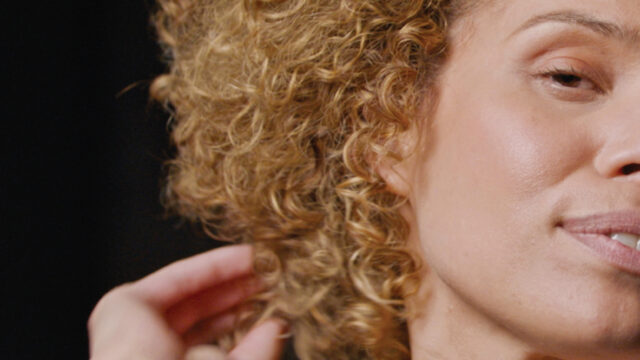
PURIST; What can the health and appearance of our hair tell us about the health of our insides?
Dr. Sophia Kogan: What you see happening to your hair is usually a manifestation of what’s happening inside your body – which is why it’s so important to take a holistic approach to hair health. There is no magic fix, but incorporating both lifestyle modifications and a supplement support like Nutrafol (formulated with ingredients that target multiple root causes of hair thinning) are some of the most effective ways to take control of your hair health.
PURIST: Recently, some women have reported seeing increased hair loss – is it possible the current stressors in today’s world are having an impact on that?
SK: Stress impacts everyone differently, and it’s important to understand that its impacts on hair are cumulative. Hair damage from chronic stress can accumulate over time and contribute to a slow process of insidious hair shedding. Acute stress is different. When a major acute stressor occurs, like the death of a loved one, a breakup or the anxiety many of us are experiencing now, it can cause a huge shift in our hormonal and neurochemical balance. This can signal a significant percentage of hair follicles to prematurely shift from the growth phase (anagen) to the resting phase (telogen). During the telogen phase, hair is no longer able to grow and prepares to shed. As a result, you might see increased shedding, thinning around the temples or hair falling out in large clumps about three to six months after the stressful event occurs.
PURIST: Women are told that it’s normal to shed some hair every day, but how much is too much?
SK: Hair thinning is a multifactorial issue and although it’s normal to shed about 50 to 100 hairs per day, anything higher might be a sign that something is going on. If you begin experiencing shedding that outweighs new growth, talk to your doctor to get to the root of the issue.
PURIST: Can eating specific foods benefit your hair?
SK: Nutrition is definitely a factor in overall hair health. For example, while being in quarantine, you might have also found yourself gravitating towards sweets, fried foods and things heavy in fat as a way to comfort yourself. Unfortunately this kind of diet can disrupt the normal balance of bacteria within the gut, compromising the microbiome and leading to less absorption of nutrients. Try to eat whole and organic foods as much as possible, get enough protein and decrease sugar intake to promote healthy hair growth.
PURIST: How do styling treatments like color, keratin straightening and hot tools compromise hair’s structural integrity?
SK: Harsh chemicals in everyday hair care products, hair dye or extreme heat can all cause inflammation of the scalp and hair follicle. It’s all about the ingredients. When talking to your stylist, ask about natural, organic hair dyes that are free of hydrogen peroxide, ammonia, ethanolamines and paraphenylenediamine (PPD). Consider using this time at home to give your hair a break. Leave it to air-dry, limit the use of hot tools, take a break from color altogether, and let your hair be in its natural state.
PURIST: How does pregnancy play a role in hair health, and how can expectant women prevent pregnancy-related hair loss and texture changes?
SK: During pregnancy, your body is exposed to higher levels of estrogen and progesterone than usual. After delivery, your body pulls the plug on excess hormone production. This causes lush pregnancy hair to rapidly enter the shedding phase of the hair cycle, referred to as “delayed anagen release.” Lifestyle modifications to manage stress can help, in addition to a boost of nourishing vitamins and minerals. Pregnant or nursing women should avoid taking herbal remedies while breastfeeding without talking to their doctor.
PURIST: What can premenopausal women do to get a jump start on hair preservation?
SK: Women advancing into menopause experience a drop in estrogen and progesterone, while androgens (male sex hormones) decline slowly. This puts them in a place of relative testosterone dominance. Since DHT can be a major culprit of female pattern hair loss, this shift is not great for your hair, but there are ways to get ahead of it. It’s important to keep stress levels low and maintain a healthy diet. Metabolism also slows down considerably during menopause, which affects the body’s ability to effectively use nutrients crucial for hair growth.
We formulated Nutrafol Women’s Balance for women peri- and post menopause. It contains an adaptogen called maca to naturally support sex hormones as they decrease, saw palmetto to counter DHT (the hormone responsible for thinning hair), ashwagandha for increased stress, and astaxanthin, a powerful antioxidant to fight oxidative stress from the environment.



